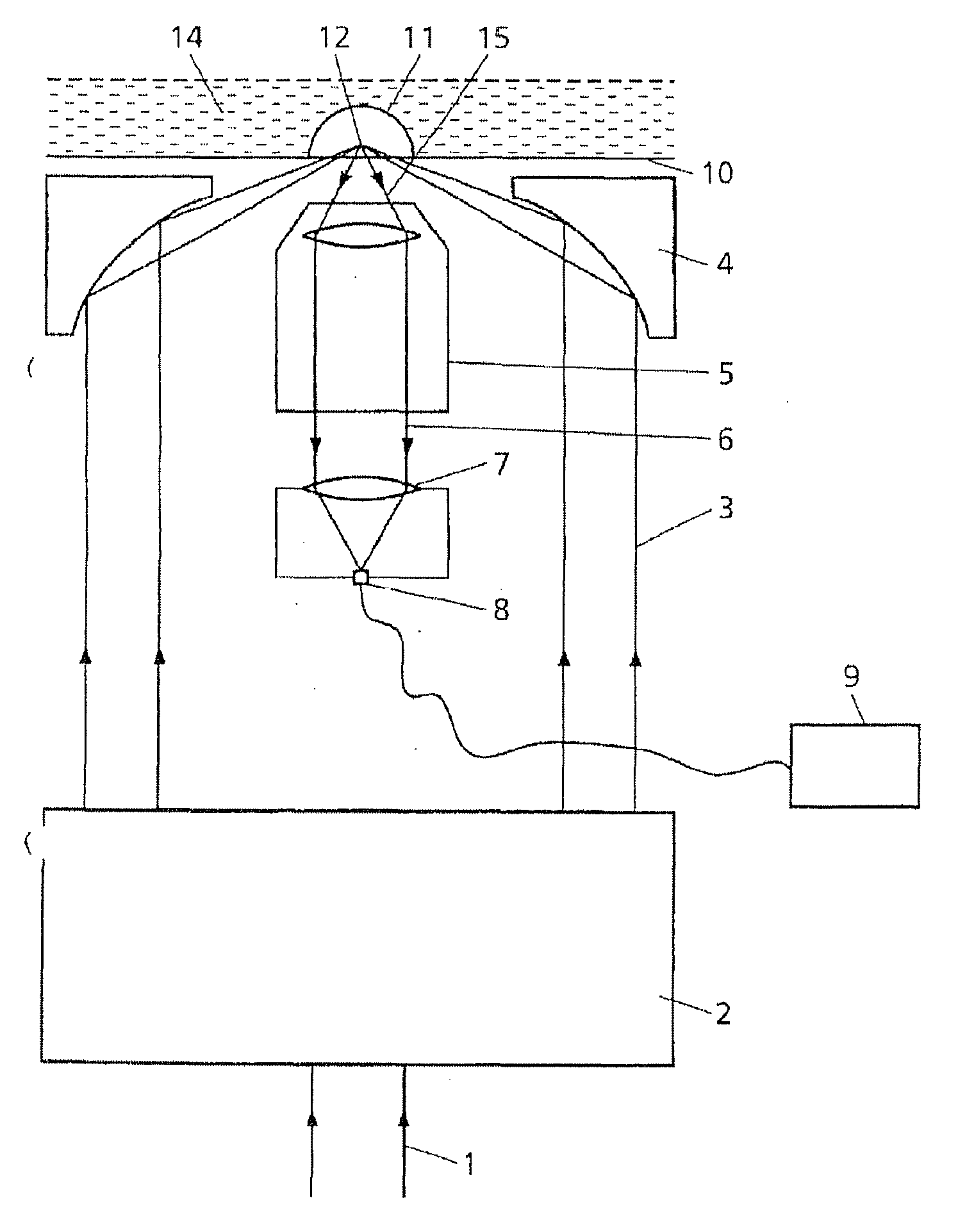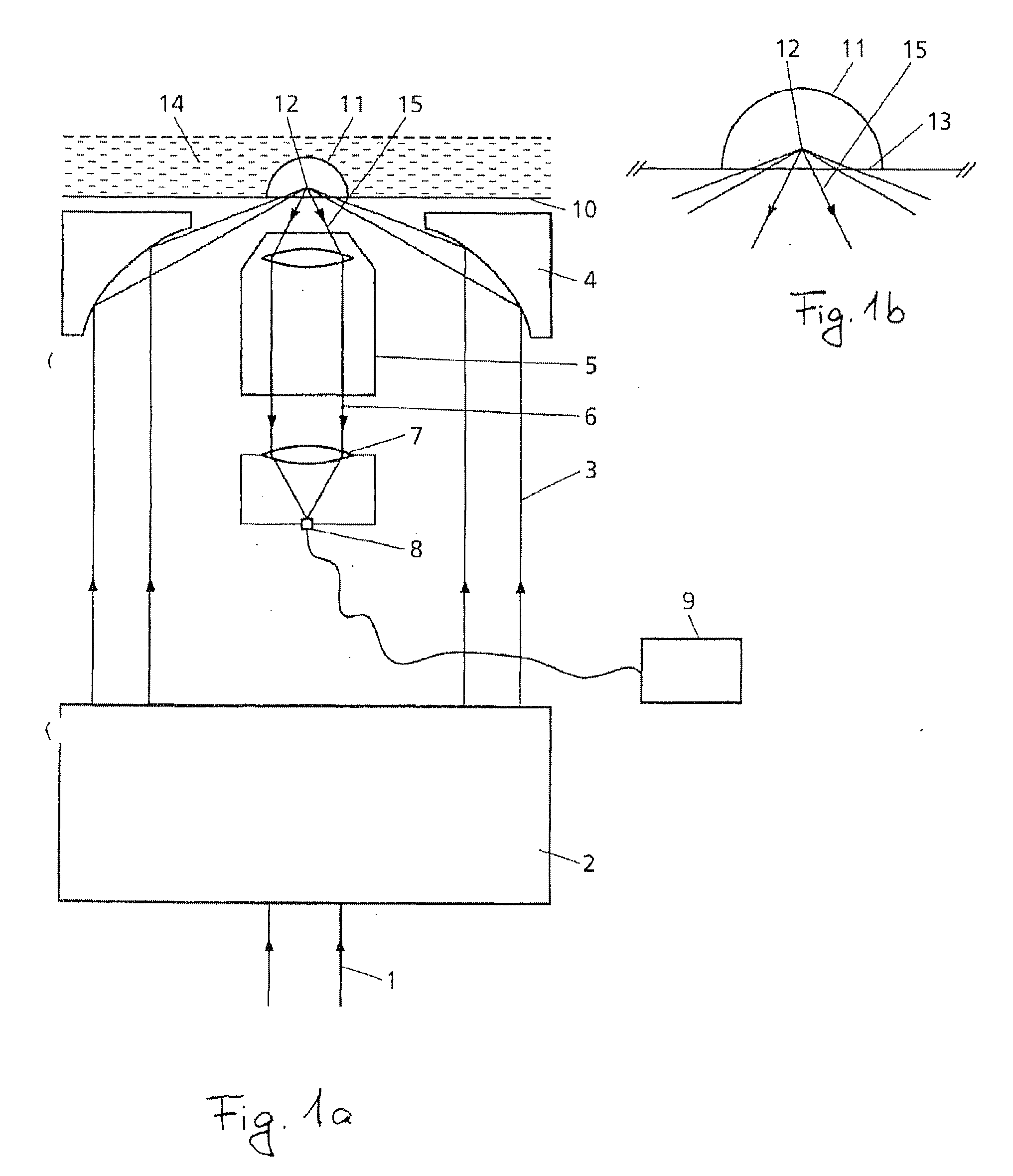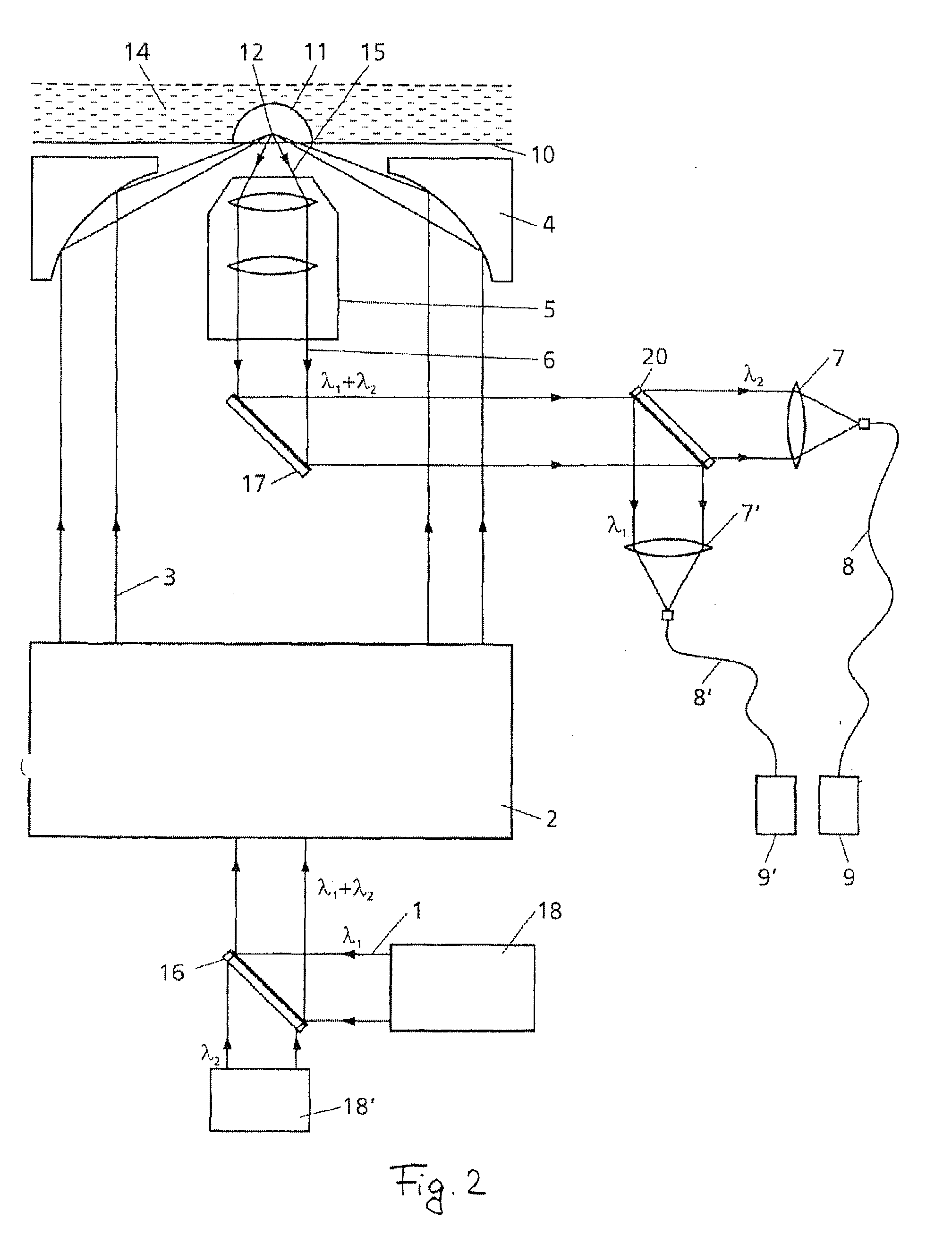Device and method for measuring static and dynamic scattered light in small volumes
- Summary
- Abstract
- Description
- Claims
- Application Information
AI Technical Summary
Benefits of technology
Problems solved by technology
Method used
Image
Examples
Embodiment Construction
[0014]The solution to this technical problem is achieved by a device, a measuring system and a process according to the independent claims. Advantageous embodiments and further embodiments are stated by the dependent claims or can be seen from the following description and exemplary embodiments.
[0015]The present device for performing light scattering measurements comprises at least one focusing element by means of which electromagnetic radiation can be focused onto a sample, a detector, and a detection optical system by means of which electromagnetic radiation scattered by the sample can be guided to the detector. According to the invention, it has been recognized that the technical problem can be solved by providing that the device additionally comprises a means for generating an annular beam, that said at least one focusing element can cause the annular beam to be focused on a focal point within the sample, and that the detection optical system can detect electromagnetic radiation...
PUM
 Login to View More
Login to View More Abstract
Description
Claims
Application Information
 Login to View More
Login to View More - R&D
- Intellectual Property
- Life Sciences
- Materials
- Tech Scout
- Unparalleled Data Quality
- Higher Quality Content
- 60% Fewer Hallucinations
Browse by: Latest US Patents, China's latest patents, Technical Efficacy Thesaurus, Application Domain, Technology Topic, Popular Technical Reports.
© 2025 PatSnap. All rights reserved.Legal|Privacy policy|Modern Slavery Act Transparency Statement|Sitemap|About US| Contact US: help@patsnap.com



